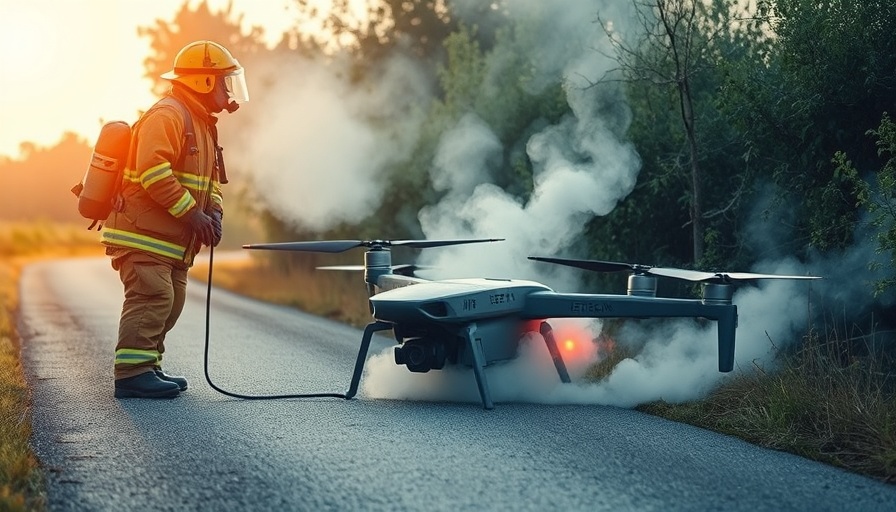
The Bizarre Incident of the Burning Drone
In a strange turn of events on a sunny afternoon, a UK border surveillance drone, specifically a Tekever AR5 Evolution MK2 worth approximately £450,000, was found ablaze on the roadside of a major motorway. Firefighters were summoned to the scene between Junction 13 for Folkestone and Junction 12 for Cheriton after reports of a vehicle fire. Upon arrival, however, they discovered that the vehicle was in fact a drone that had caught fire, rather than a car as initially believed.
Understanding the Drone's Role in Border Surveillance
This incident raises intriguing questions regarding the use of drones for national security. The Tekever AR5 Evolution MK2 is commonly deployed by the UK Home Office to monitor activities over the English Channel, particularly regarding illegal immigration and smuggling. These drones are equipped with advanced surveillance technology, providing real-time data and aerial footage crucial for border control operations.
What Happened? A Closer Look at the Incident
According to eyewitness accounts, the drone was seen with registration number ‘G-TEKE’. The drone, which had reportedly been transported in a vehicle, caught fire for reasons that remain under investigation. Kent Fire Services sent two fire engines to extinguish the flames using hose reel jets. No injuries were reported.
Firefighters' Response and Challenges
Given the growing prevalence of drone technology in various industries—from law enforcement to agriculture—emergency responders are increasingly faced with unique challenges when dealing with drone-related incidents. Safety protocols may not always be clear-cut, especially when handling machines that could be equipped with sensitive technology or hazardous materials.
Broader Implications for Drone Usage
This incident serves as a reminder of the vulnerabilities inherent in advanced technology. As drones become integrated into everyday operations, the importance of ensuring their reliability and safety increases. Questions about the durability of such technologies and their fail-safe mechanisms are relevant not only for military and law enforcement applications but also for commercial enterprises that cherish reliability.
Enhancing Drone Safety Standards
As drones revolutionize surveillance and logistics, it is crucial for government agencies and manufacturers to collaborate on establishing rigorous safety standards. This not only protects investments but also ensures public safety. With drones taking on more responsibilities, from disaster management to urban planning, their operational efficacy and safety must remain a priority.
Conclusion: What's Next for Drone Technology?
While the incident of the burning drone may appear insignificant at first glance, it represents a critical moment for the UK’s drone program and serves as a warning for the future. As the volley of modernization continues to shape global landscapes, it’s essential for those involved in drone technology to stay vigilant. Therefore, stakeholders across sectors must actively engage in conversations regarding safety, reliability, and the ethical implications of deploying drones, shaping a future where technology serves society’s best interests.
 Add Row
Add Row  Add
Add 




Write A Comment